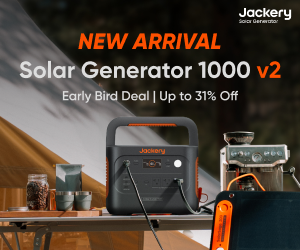Which Solar Generator - Survival Manual

So, you are in the market for a solar generator. The choices might seem over whelming. Here we will give you the tools to make an informed decision. I can't just tell you which one is best because over time the options available will change and most importantly what you want your from your solar generator will play a huge part in your decision. So, you need to compare specs. Forget the splashy advertising language and go straight to the specs.
Look for this:
Battery chemistry
Power output (watts per hour)
Surge capacity
Battery capacity
The first spec to look at is type of battery, aka battery chemistry. I will not go into a long explanation here your time is valuable. There is currently only one battery to consider and that choice is LiFePo4 batteries. A solar generator / power station is an investment and the longevity of the LiFoPo4 (LFP) batteries are magnitudes better than the alternatives. Do not make the mistake of buying a unit that has li ion batteries, they are not the same. You want a unit that will last for decades not at most a decade. The cost might, and I repeat MIGHT be higher. In the case of the Jackery 1000 units the price is almost identical whichever battery you choose to get. Oh, and LiFePo4 batteries handle deep discharge much better. Win win win!
THis decision is the easiest decision you will ever make. LiFePo4 or forget it.
Now to determine your need, we need to have an idea of how many watt hours (wh) of capacity you need. Watts indicate how much electrical power a device requires for 1 hour of use. Here's how to determine your needs:
Check Power Ratings: Find the wattage required for each device (usually on the device label). Total Up the Watts: Add the wattage of all devices to get the total watts you'll need. Example Calculation:
Cell Phone: 10 watts
Laptop = 75 watts
Coffee Maker = 900 watts
Mixer = 300 watts
Total = 10 + 75 + 900 + 300 = 1285 watts in one hour.
Knowing your ideal wattage helps determine the power of solar generator you need. The amount of watts being pulled if everything was in use at one time would be 1285 watt(wh). This will need to be compared to the spec sheet for the solar generator you are considering. The Anker F2600 for example has the ability to provide 2400W continuous AC output, which is more than enough for the stuff listed above. The Jackery 1000 V2 is a smaller unit and can still manage the above load. It's specs are a max of 1500 watts. So either unit will run the above.

The next spec to consider is surge capacity. Surge capacity (surge watts) is a measure of how many watts can be provided for a few seconds. The Anker F2600 has a surge capacity of 2800 watts the Jackery 1000 V2 has a surge capacity of 3000 watts. Pretty similar, but actually higher for the smaller device in this case.
Why is this important. It is only important when you want to run devices that have initial power draws that are much higher than their steady running draws. For example, my home side by side refridgerator have a continuous pull of about 80 watts per hour while running other units will pull as much as 285 watts per hour when running, check yours. However when either of these devices kick on it can draw ten times as much power for a couple of seconds.
So while all of the available solar generators can power my refrigerator not all can actually start it. And my experience is it is very important to be able to start the refrigerator compressor if you want it to cool. Something to consider if you plan on using your solar generator for saving your freezers contents during a hurricane or some other disaster natural or man-made.
The next spec to consider is battery capacity. Keep in mind that the calculations above means that each of those appliances use that many watts in one hour. If you coffee maker will run for only 30 minutes, then you can divide the watts by half. If the laptop will run for 3 hours, then multiply the watts by 3.
So punch a few numbers and determine how many watts you will need during a 24 hour period. Look at the spec sheet and find a unit that has a least enough watts to last you 24 hours.
You can get a good idea straight from the name of the unit. Often a close match can be made for how many watts the battery holds when fully charged is right in the name. For example, the Anker F2600 has a battery capacity of 2560 watts when fully charged so it can run a device that uses 100 watts per hour for an entire day. The Jackery 1000 v2 has a battery capacity of 1070 watts.
So for example if you have a steady pull of 100 watts the Anker F2600 will theoretically last for 25.6 hours and the Jackery 1000 V2 will last for 10.7 hours.
Leave yourself a buffer. It is best to not pull a LiFePo4 battery down below 20% state of charge if you want to prolong its life. This may sound bad but it is actually great compared to most other batteries. Pulling a lead acid battery down below 50% can kill the battery. Pull you LiFePo4 battery down to zero and it will not be destroyed and probably not noticeably harmed it in any way. But, try to leave some charge when possible.
Again bigger is better. All other things being equal (which they never are) you would always want the largest battery capacity possible. However, that directly affect cost, size and weight.
The next spec to consider is the solar input capacity. Again, bigger number are better. The Anker F2600 can handle 1000 watts of input per hour from solar. Usable voltage range must be between 11 to 60 volts. From the grid the input is greater, as much as 1440 watts per hour. These numbers are important because they determine how fast you can recharge the battery in the unit.
If you think speed isn't important for what you expect to use it for, consider that Cloudy days will reduce the amount of power a solar panel produces. So if you don't get sun all day it is important to be able to pump the batteries full even when the sky is overcast.
So consider the amount of input allowed and the available source. The three most common sources are solar, car alternator via cigarette light, and AC plug from the grid. Not all will have all three of these options available.
The next spec to consider is the available output ports. Most will have both AC and DC ports. Consider how many AC plugs are available and how many amps they can supply. Does it have a NEMA TT plug for supplying power to a camper?
Other considerations if you are going big. Does it have expansion capabilities such as the ability to add on more battery power? Does it have the capability to work with another unit to provide 220 volt power to things that might require 220v such a well pumps, AC units, some heaters?
Next consider other aspects such as how it is designed. How are the handles made, how well do its wheels work on rough ground if it is a heavy unit.
Tip: The various units can often be bundled with solar panels that fold up and are designed for your device. You can save money by buying your own solar panels separately and hooking them up with a simple adapter. Just look up what exact plug you have on your solar panels and on the Solar generator. There will be available adapters for all panels to all solar generators.
Tip #2: The internet is forever, so consider the date of the post you are reading as the technology is fast changing. If you are researching don't bother reading cons of these devices if the post was made three years ago as cons such as crappy batteries and high relative cost have already changed. Forum content should be within the last six months.
In conclusion, I personally think a solar generator is a great purchase for you. Whether you want to use it just during an occasion blackout to charge small devices so you aren't just sitting around waiting for the lights to come back on or it you want to use one for camping, phone charging, lights, fan, etc., or if you have bigger needs such as prolonged power outages to save you frozen foods, and today there is even the possibility to buy multipe units and expansion batteries to power almost anything you are wanting to power.



